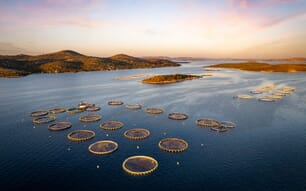Traceability
Off the bat panelists highlighted some of the key challenges facing the industry. Beth Lowell, campaign director for Oceana, spoke about their recent investigation which found that up to 1/3 of the seafood sold in US restaurants, retailers and sushi bars are mislabeled. This rampant fraud is made possible by seafood’s “opaque and old fashioned value chain… it’s a problem by system design,” said Michael Dimin of Sea to Table, a company that is providing a direct and transparent supply chain from fisherman to customer. In addition to fraud-fish, there is a huge amount of “mystery fish,” according to Cheryl Dahle, Executive Director of Future of Fish. Making the business case for traceability is key to shed the necessary light on this industry.
Transparency
Traceability allows companies to move away from the commodification of fish, to instead offer what Ms Dahle calls “storied fish.” In this way traceability technology can not only reduce brand risk and cut costs, it can also add value - through the story - to your end product. Consumers, all panelists agreed, love knowing where their fish comes from, and who caught or raised it. “If you don’t know where your fish comes from, you have a 90 per cent chance it is coming from the wrong place,” said Mr Dimin. Traceability is therefore the first logical step towards transparency, which is the best route to establishing trust between the industry and consumers. The technology exists, and the start-up costs do not need to be much more than the cost of a smart phone. “We’ve come to expect the ability to track our packages around the world through companies like FedEx, its only a matter of time before we can do the same with our fish,” claimed Ms Lowell.
Sustainability
Seafood sustainability, it was argued, must be about more than just fishery science. Mr Dimin made the case for a definition of sustainability that also has at its core the interest of those people and communities who rely on seafood for a living. Barton Seaver, of the Harvard School of Public Health, argued that there is no such thing as unsustainable seafood, just unsustainable demand. “The question we rarely ask ourselves is what are we trying to sustain”, Mr Seaver continued, “we eat to sustain ourselves, but lately it has done the opposite. We have a diet-induced health epidemic in the US.” Rather than spending all our time managing fisheries, Mr Seaver called for more focus on managing ourselves, and our demand. “We have to move away from an economy based on unsustainable demand, to one driven by sustainable supply,” he concluded.
Economic Viability
Eric Schwaab, senior VP of the National Aquarium in Baltimore, was the first to mention the role and potential of aquaculture to both meet soaring demand and generate economic benefits to local communities.
The role of government in securing the economic viability of local fishing communities, was highlighted by Steve Vilnit, director of fisheries marketing at the Maryland Department for Natural Resources. By shifting their supply chain for yellow perch away from frozen fish sold the Midwest, to fresh, seasonal fish sold in markets and retailers in Maryland, fishermen’s prices jumped from 70 cents/lb to over 4$/lb. This is an illustrative example of how to add value in seafood by moving away from quantity driven commodity sales, to quality driven storied fish. “Value is seafood,” said Sean Dixon of the Village Fishmongers, “is to catch less and get more money.”
Aquaculture
In a discussion that was disappointingly uncontroversial according to the moderator, experts shed light on various aquaculture production practices in an attempt to demystify the industry. Andrew Lively of True North Salmon, described their exploration of multi-trophic aquaculture, using the production of other species like kelp and shellfish as a means to tackle the waste produced by the salmon. Norman McCowan, CEO of Bell Aquaculture, discussed how they extract the solid waste from their land based recirculating system situated in the middle of a corn field in Indiana, in order to sell it as fertilizer. Yemi Amu, from Oko Farms, explained how their system of producing fish and vegetables in Bushwick, NYC, has a strong educational component, raising awareness about the possibilities of producing healthy sustainable food in cities.
Growing up & Cleaning up
The panelists discussed the industry’s ongoing effort to reduce their reliance on fishmeal and fish oil in feed needed for carnivorous fish like salmon. A discussion around feed conversion rates, led Ms. Dhale, the moderator, to challenge the panelists to a beef vs. farmed fish smack down. Even when accounting for different ways to produce both fish and beef, fish won hands down. Øistein Thorsen, principal consultant at Benchmark Sustainability Science, explained that while there have been great improvements there are still challenges around managing the environmental impact of aquaculture, especially in fragile coastal environments. “Aquaculture is a young industry that is in the process of growing up and cleaning up,” he said. “There are also exciting new technologies in the pipeline, both in terms of alternative feed sources, and production systems that will allow more effective farming on land, and further off shore”.
The ocean is over-exploited and under-explored when it comes to providing food for people. While it covers 70 per cent of our planet’s surface, it is only the source of six per cent of our protein. With increasing demand, and wild catch plateauing or decreasing, future growth in seafood is likely to come from aquaculture.



